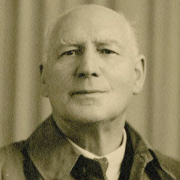![]()
Isle of Man Wells researches wells and springs on the Island to provide a modern record of their location, condition and usage
Produced in the late 1860s, the first Ordnance Survey maps of the Isle of Man record over 1,200 wells and springs. These wells and springs were an important part of Manx life with people visiting them daily to sustain themselves and their animals, whilst others held special reverence and were visited on particular days of the year or for their renowned healing properties when illnesses occurred.
In the 19th century in particular, records show that some of these springs and wells were deliberately destroyed by tenant farmers and landowners along with tumulii and other antiquities. And now, either through neglect or because there is no-one alive who knows their location and they are no longer visited and tended, more are in danger of being lost for good. With domestic wells, the arrivial of mains water meant that many were either abandoned or filled in.
In view of this, the Aims of the Isle of Man Wells’ Project are:
Highly important for their close proximity to homes and the fresh water they offered, some domestic wells are simple in design, others are stone-roofed and gated. Sustaining families, animals, vegetable and flower beds, they were also meeting places.
Even when the church was forceful in forbidding people to attend, they would take to the hills to visit wells of distinction and perform their rituals. Some wells were so highly thought of, people came from all over the Island to seek their healing properties.
Though very pleasurable and often great fun! there is a lot of work involved in visiting and recording the wells so if you know of a well in your area and have the time to go visit and report on it, we would welcome your input so more records can be updated.
A Green Lady (fairy woman) has been seen in its immediate vicinity within the last few years.
~ Chibbyr Feeayr, Grenaby
W Walter Gill (1929)
A nearly forgotten species of fairy-woman associated with wells, springs and pools.
~ W Walter Gill (1934)
The Old Man is recognizable as the well’s supernatural protector…and (tells us) that it was a Fairy Well.
~ Glencrutchery Well, Conchan
W Walter Gill, (1929)
When visiting sacred springs and wells please take care to leave them as the next visitor would like to find them. Respect the land and all its inhabitants – plants, animals and people.
In times past, some traditions involved the tying of rags to trees and the leaving of offerings like coins, pins, buttons and pebbles in or around the water basin, however, we encourage you to leave no physical offerings as this can impact on the environment and wildlife, particularly when non-biodegradable items are left. Please consider making your offering in a different form like a song, a poem, leave a strand of hair or weave your prayer into the long grass with your wish/intention. Please do not hang anything from branches or poison trees with copper coins. Never leave artificial materials.
If, however, you feel a physical offering is called for, please choose your offering carefully so that it cannot be mistaken for litter. Please do not dig or bury things. Biodegradable offerings decay so bear this in mind if you leave something. If there are already offerings at the site, consider the effects of adding more.
Please do not take anything except litter from a site. Much of the vegetation around sacred sites may be unusual or rare, so do not pick flowers or take stones – they may be an important part of the site in ways that are not obvious.
A tradition that developed in times of persecution was to leave no trace of any ritual. This tradition is worth reviving because it shows reverence to nature and the spirit of the place.
.
Please don’t change the site;
let the site change you.
~ adapted from ASLaN Sacred Site Charter



Chibber Breega (sic)…You can hardly find it now but when you go along, the ground is all shaky. I remember it all clear as long as from here to the door and about four yards wide – a hole – and some said you could go in there and come out at the Point of Ayre. ~ (Manx Folk-life Survey, 1953)

Some of these wells were formerly much venerated, as their waters were supposed to possess sanative qualities and to be of special virtue as charms against witchcraft and Fairies. The devotees would drop a small coin into the well, drink of the water, repeat a prayer, in which they mentioned their ailments, and then decorate the well, or the tree overhanging it, with flowers and other votive offerings, usually rags. They believed that when the flowers withered, or the rags rotted, their ailments would be cured. ~ (Folklore of the Isle of Man, 1891)